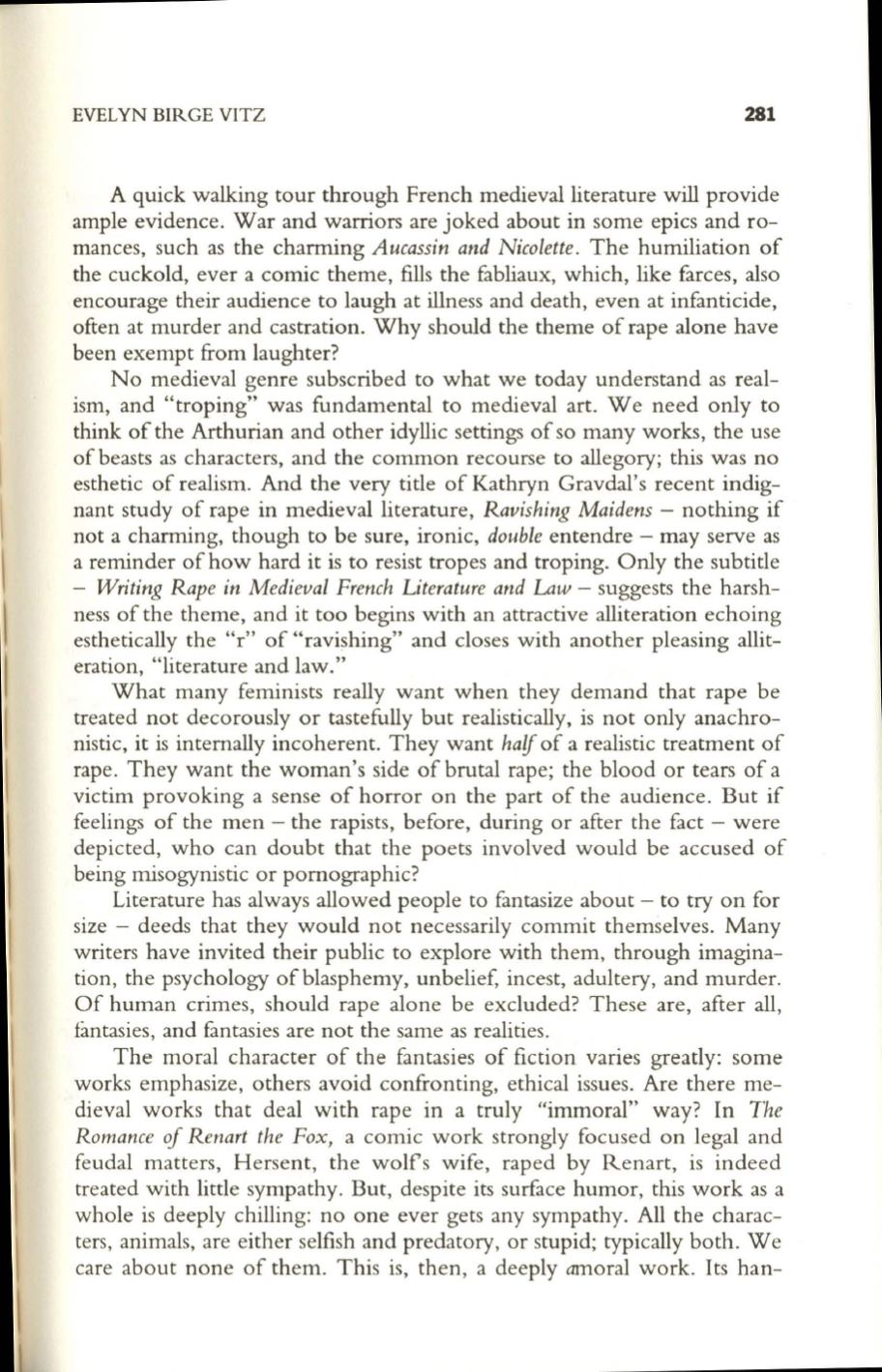
EVELYN BIRGE VITZ
281
A quick walking tour through French medieval literature will provide
ample evidence. War and warriors are joked about in some epics and ro–
mances, such as the channing
Aucassin and Nicolette.
The humiliation of
the cuckold, ever a comic theme, fills the fabliaux, which, like farces, also
encourage their audience to laugh at illness and death, even at infanticide,
often at murder and castration. Why should the theme of rape alone have
been exempt from laughter?
No medieval genre subscribed to what we today understand as real–
ism, and "troping" was fundamental to medieval art. We need only to
think of the Arthurian and other idyllic settings of so many works, the use
of beasts as characters, and the common recourse to allegory; this was no
esthetic of realism. And the very title of Kathryn Gravdal's recent indig–
nant study of rape in medieval literature,
Ravishing Maidens
-
nothing if
not a channing, though to be sure, ironic,
double
entendre - may serve as
a reminder of how hard it is to resist tropes and troping. Only the subtitle
- Writing Rape in Medieval French Literature and
Law
-
suggests the harsh–
ness of the theme, and it too begins with an attractive alliteration echoing
esthetically the "r" of "ravishing" and closes with another pleasing allit–
eration, "literature and law."
What many feminists really want when they demand that rape be
treated not decorously or tastefully but realistically, is not only anachro–
nistic, it is internally incoherent. They want
half
of a realistic treatment of
rape. They want the woman's side of brutal rape; the blood or tears of a
victim provoking a sense of horror on the part of the audience. But if
feelings of the men - the rapists, before, during or after the fact - were
depicted, who can doubt that the poets involved would be accused of
being misogynistic or pornographic?
Literature has always allowed people to fantasize about - to try on for
size - deeds that they would not necessarily commit themselves. Many
writers have invited their public to explore with them, through imagina–
tion, the psychology of blasphemy, unbelief, incest, adultery, and murder.
Of human crimes, should rape alone be excluded? These are , after all,
fantasies, and fantasies are not the same as realities.
The moral character of the fantasies of fiction varies greatly: some
works emphasize, others avoid confronting, ethical issues. Are there me–
dieval works that deal with rape in a truly "immoral" way? In
The
Romance of Renart the Fox,
a comic work strongly focused on legal and
feudal matters, Hersent, the wolfs wife, raped by Renart, is indeed
treated with little sympathy. But, despite its surface humor, this work as a
whole is deeply chilling: no one ever gets any sympathy. All the charac–
ters, animals, are either selfish and predatory, or stupid; typically both. We
care about none of them. This is, then, a deeply amoral work. Its han-


